Publication: Scotland's financial response to Covid-19: Spending update
Scotland's financial response to Covid-19:Spending update
We published Scotland's financial response to Covid-19 in June 2022. This update presents Covid-19 spending for 2020/21 and 2021/22 in an interactive format.
More information on how to use the exhibits can be found here

The exhibits are interactive, click on them to highlight areas of interest or hover over for more information.
If you are viewing this site on a mobile device, you may want to rotate your device to landscape orientation. This will let you view the details of the more complex interactive charts and graphs.

We have used information published by the Scottish Government in their budgets and accounts and information from Local Government accounts. The data is correct up to 29 March 2023.
The data is downloadable as csv files on this page.
The Scottish Government spent £14.5 billion on its pandemic response
Scottish Government spending was funded mainly through £14.4 billion of Barnett consequentials, which come from UK Government spending on the pandemic in the rest of the UK. The rest was funded from elsewhere in the Scottish budget and the Scotland Reserve.
UK Government spending programmes were a key part of the pandemic response, totalling over £321 billion across the UK. In Scotland, UK-wide spending programmes provided more than £11.4 billion of support. These funds were not controlled by the Scottish Government.
| Covid-19 Barnett consequentials | Budgeted to spend on Covid-19 | Actual spending on Covid-19 |
|---|---|---|
| £14.4 billion | £15.5 billion1 | £14.5 billion |
Note 1: This is a gross figure so includes instances where Covid-19 funding was later reallocated in year to different areas of Covid-19 spending. The net figure is £15.2 billion.
Over two years the actual amount spent on Covid-19 was less than budgeted
The actual amount spent was lower than the amount budgeted because:
- some Covid-19 Barnett consequentials from the UK Government did not arrive until late in 2020/21. This meant they were budgeted for in 2020/21 but could not be spent in full before the end of the financial year. They were then carried through the Scotland Reserve and used in 2021/22
- the uptake of some demand-led schemes, such as business support and self-isolation support grants, was lower than originally anticipated
- the Scottish Government moved funding between different parts of the budget during the pandemic to meet emerging need. The gross figure includes the original budget amount and the amount allocated later. If we adjust for this, the net figure is £15.2 billion.
The difference was used to support other areas of Scottish Government spending or was carried through the Scotland Reserve and used in the following year.
The Scottish Government spent less than it budgeted in 2020/21 and 2021/22
Through our reporting on Covid-19 finances we said that the Scottish Government had difficulties tracking its spending on Covid-19 because it is not a budgetary or accounting classification. Read more in our Covid-19 report and tracker papers.
Source: Scottish Government budget data, Consolidated Accounts, Audit Scotland analysis.
Source: Scottish Government budget data, Consolidated Accounts, Audit Scotland analysis.
Source: Scottish Government budget data, Consolidated Accounts, Audit Scotland analysis.
Note: The Scottish Government reallocated underspend in demand-led business support funding from the Finance and Economy portfolio to support other areas of the budget.
Note: The Scottish Government changed the titles of some of their portfolios and what spending is included within each between 2020/21 and 2021/22.
Source: Scottish Government budget data, Consolidated Accounts, Audit Scotland analysis.
What did the Scottish Government spend the additional Covid-19 funding on?
The largest amounts were budgeted to support for business and for health and social care.
Source: Scottish Government budget data, Audit Scotland analysis.
Councils and health and social care received the most Covid-19 funding.
Source: Scottish Government 2020/21 Consolidated Accounts, Audit Scotland analysis.
Source: Scottish Government 2021/22 Consolidated Accounts, Audit Scotland analysis.
What did councils spend the additional funding on?
There were three main ways that the Scottish Government spent money through councils during the pandemic:
- £1.8 billion was given to councils through the general revenue grant for purposes such as free school meals, self-isolation support, lost income cover and general Covid funding. Much of this was for a clear purpose decided by the Scottish Government but £764 million was for purposes that the council could control.
- £1.7 billion to offset the loss in Non-Domestic Rates (NDR) revenue caused by the rates relief programme
- £2.6 billion to deliver specific grants such as business support on behalf of the Scottish Government.
The graphs below show only the funding distributed through the general revenue grant.
Note: This is funding allocated through the general revenue grant and does not include the majority of business support funding.
Source: Local Government Finance Circulars.
Note: This is funding allocated through the general revenue grant and does not include the majority of business support funding
Source: Local Government Finance Circulars, Audit Scotland analysis.
Councils spent Covid-19 funding on a wide range of purposes:
- General Covid-19 funding was provided to councils to spend on their local priorities related to Covid-19.
- Cover for lost income provided additional funding to councils to cover income which may have been lost due to the pandemic, for example from leisure trusts or parking.
- Support for individuals and families funding supported people through the pandemic and includes funding for winter hardship payments, food funds and mental health support.
- Support for business was funding to support councils administering grants delivered on behalf of the Scottish Government but does not include those grants. It also includes council-controlled business support grants such as the discretionary fund.
- School funding was for additional teachers, improvements to allow for home learning, digital inclusion and recovery funding.
- Free school meal funding allowed councils to continue providing free school meals to pupils during lockdowns and holidays.
- Council services include additional funding for some services which were needed more through the pandemic such as environmental health and registrars of death, as well as funding for test and protect.
Note: This is funding allocated through the general revenue grant and does not include the majority of business support funding.
Source: Local Government Finance Circulars, Audit Scotland analysis.
Many business support grants were delivered by councils
The Scottish Government spent around £5 billion supporting businesses through the pandemic. The largest areas of funding shown below made up 81 per cent of support. The remaining funding was made up of around 120 small funds supporting a range of businesses such as museums, farmers and childminders.
The Scottish Government has not yet published a full breakdown of business support spending by council.
Source: Scottish Government Consolidated Accounts.
Read more about business support here: Scotland's economy. Supporting businesses through the Covid-19 pandemic.
Unspent Covid-19 funding increased council and Integrated Joint Board (IJB) reserves during the pandemic
The Scottish Government treats the payments it makes to delivery partners as spending; however, the money may not have reached the end user at that point. This makes it complex to track Covid-19 spending over time.
Councils increased their reserves again in 2021/22
Some funding provided to councils was provided late in the year and not spent in 2020/21 and 2021/22; this was carried into future years in their reserves. Councils have now allocated their Covid-19 reserves to spend over the coming years.
Note: Council general fund reserves excluding the housing revenue account.
Source: Council audited accounts, Audit Scotland analysis.
Note: Council general fund reserves excluding the housing revenue account.
Source: Council audited accounts, Audit Scotland analysis.
IJB reserves have increased eightfold since the start of the pandemic
This is largely due to additional Covid-19 funding received at the end of the year.
IJB Covid-19 reserves will be used in 2022/23:
- IJBs expect to spend £181 million on Covid-19
- The Scottish Government plan to recover the remaining £321 million to fund other Covid-19 health spend
Source: IJB audited accounts, Audit Scotland analysis.
Source: IJB audited accounts, Audit Scotland analysis.
Covid-19 spending is now part of public sector budgets
Specific funding for Covid-19 funding has ended. Covid-19 spending must be managed alongside a range of other challenges such as the cost-of-living crisis and the increase in inflation. For example:
- The NHS in Scotland 2022 report states that the Scottish Government expect to spend £723 million on Covid-19 in 2022/23, including £181 million by IJBs funded from their reserves.
- The 2022/23 budget for rail services in Scotland increased by £57 million partly due to a reduction in passenger numbers and income.
Read more about the financial sustainability challenges facing the Scottish public sector.
Reform is vital to tackle challenges highlighted by Covid-19
Over the last three years, the Auditor General and Accounts Commission have published reports looking at aspects of the public sector's response to the pandemic. The Scottish Government has agreed to a public inquiry to investigate the handling of the pandemic in Scotland. This is likely to cover some of the themes which have emerged from our reporting.
These themes are not new. The public sector is facing a period of sustained financial challenge and the pace of service reform needs to increase. Click below for more information on each theme and links to our reports.
Pandemic response
Preparedness
The Scottish Government, councils and other public bodies were not prepared for the scale and extent of the pandemic. This is in terms of the health response required and the financial processes that needed to be put in place.
Decision making
Transparency suffered at times because decisions had to be taken at speed.
Partnership working
The Scottish Government, councils, other public bodies and communities worked well in partnership to respond to the pandemic. The Scottish Government also worked closely with the UK Government to understand the funding that was available to it.
Lessons learnt
An evaluation is needed to be clear on what worked well or not. That will ensure mistakes are not repeated and innovations retained instead of returning to old ways of working. This is especially important as Scotland increasingly faces more cross-cutting challenges such as tackling child poverty and climate change.
Finances
Financial management
Large amounts of funding were spent quickly and in changing circumstances which makes budget management very difficult. Overall, we found that the Scottish Government was largely responsible for the spend and managed its budget well, but transparency suffered at times.
Transparency of spend
As auditors we found it difficult to track Covid-19 spending from announcements to budgets and on actual amounts spent. Improvements have been made but scrutiny is still difficult.
Impact of the pandemic
Equalities
The pandemic has not affected everyone equally, in fact it has exacerbated existing inequalities. The lack of services and move online has impacted some groups more than others. As the country recovers from the pandemic and faces new challenges it will be important to understand the impact on different groups.
Workforce
Public sector staff across Scotland worked extremely hard in very difficult circumstances. Our audit work has highlighted the pressure this has put on them in terms of wellbeing, sickness absence and the ability to provide a service.
Financial sustainability
The pandemic affected public bodies' ability to make efficiency savings. They need to be clear about how one-off funding is spent especially if that is on costs likely to be repeated in future years.
Glossary of terms
Barnett consequentials
Additional funding comes to Scotland when the UK Government spends money in England in a devolved policy area. The Scottish Government receives this funding in the form of Barnett consequentials and has flexibility in deciding how to allocate this funding. ↩
Scotland Reserve
The process whereby any underspend in the Scottish Budget can be carried forward to be used in future years. It is capped at £700 million. The Scottish Fiscal Commission has more information here. ↩
Non-Domestic Rates
Business rates paid by local business to a Local Authority. ↩
 Covid-19: Personal protective equipment
Covid-19: Personal protective equipment NHS in Scotland 2022
NHS in Scotland 2022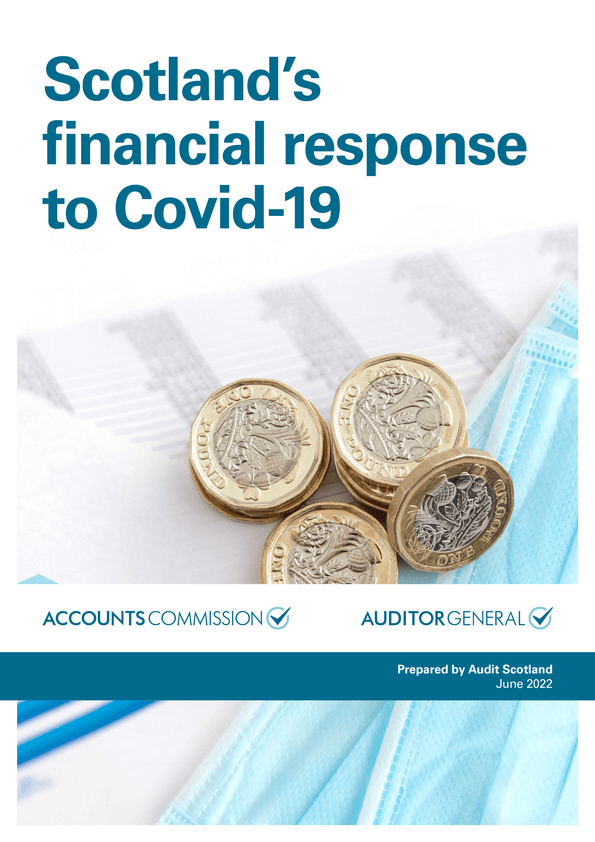 Scotland's financial response to Covid-19
Scotland's financial response to Covid-19 Covid-19: Implications for public finances in Scotland
Covid-19: Implications for public finances in Scotland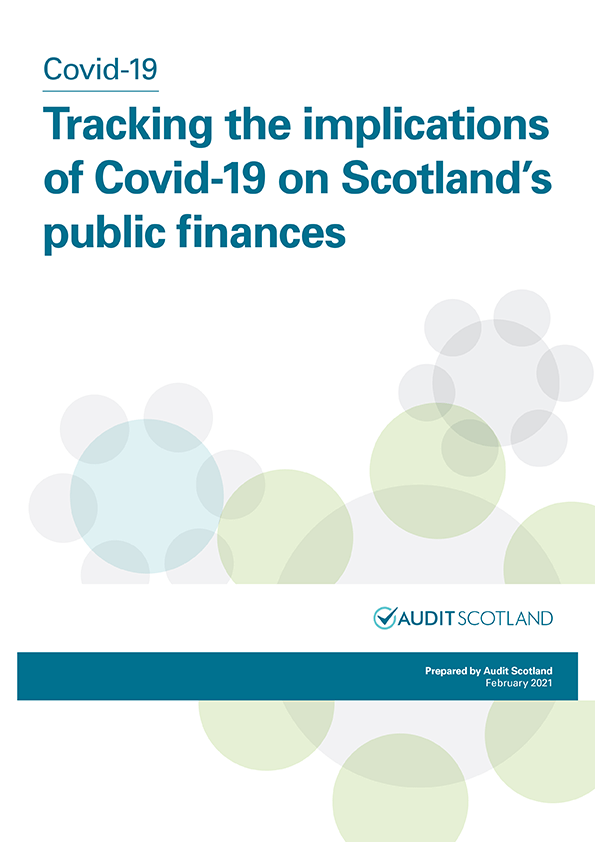 Covid-19: Tracking the implications of Covid-19 on Scotland's public finances
Covid-19: Tracking the implications of Covid-19 on Scotland's public finances Covid-19: Tracking the impact of Covid-19 on Scotland's public finances: a further update
Covid-19: Tracking the impact of Covid-19 on Scotland's public finances: a further update NHS in Scotland 2021
NHS in Scotland 2021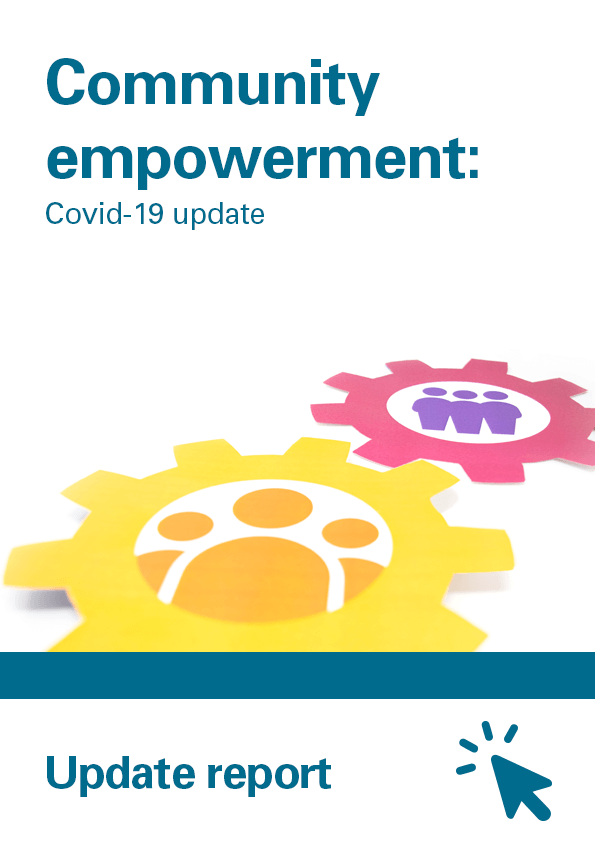 Community empowerment: Covid-19 update
Community empowerment: Covid-19 update Covid-19: Vaccination programme
Covid-19: Vaccination programme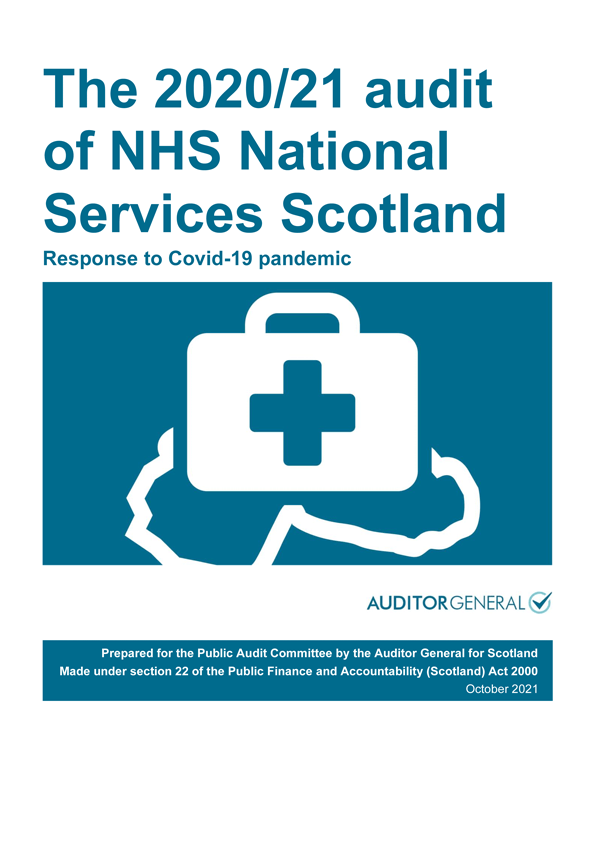 The 2020/21 audit of NHS National Services Scotland
The 2020/21 audit of NHS National Services Scotland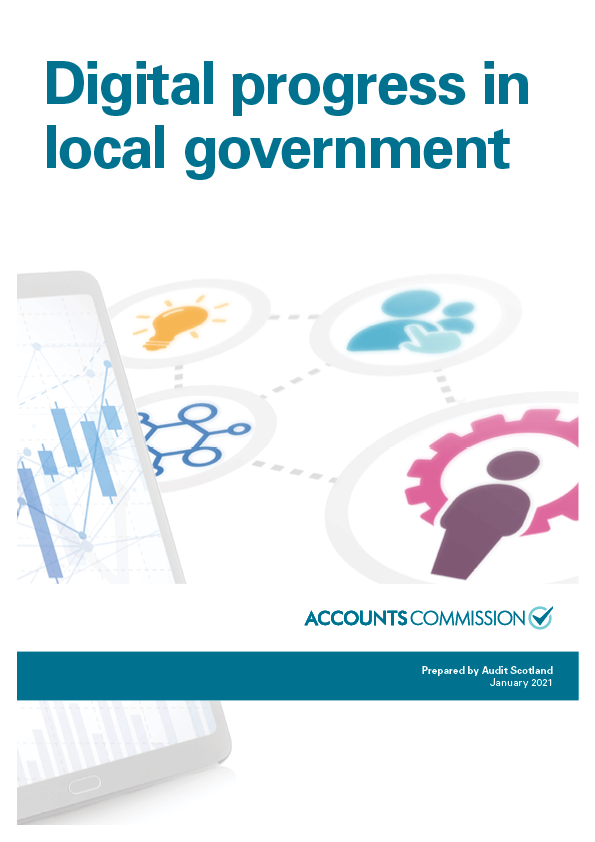 Digital progress in Local Government
Digital progress in Local Government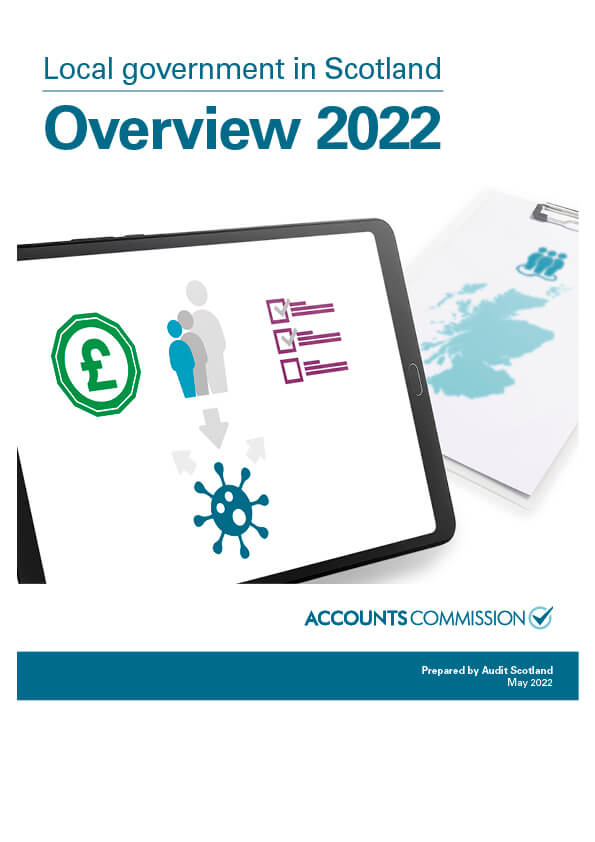 Local Government in Scotland Overview 2022
Local Government in Scotland Overview 2022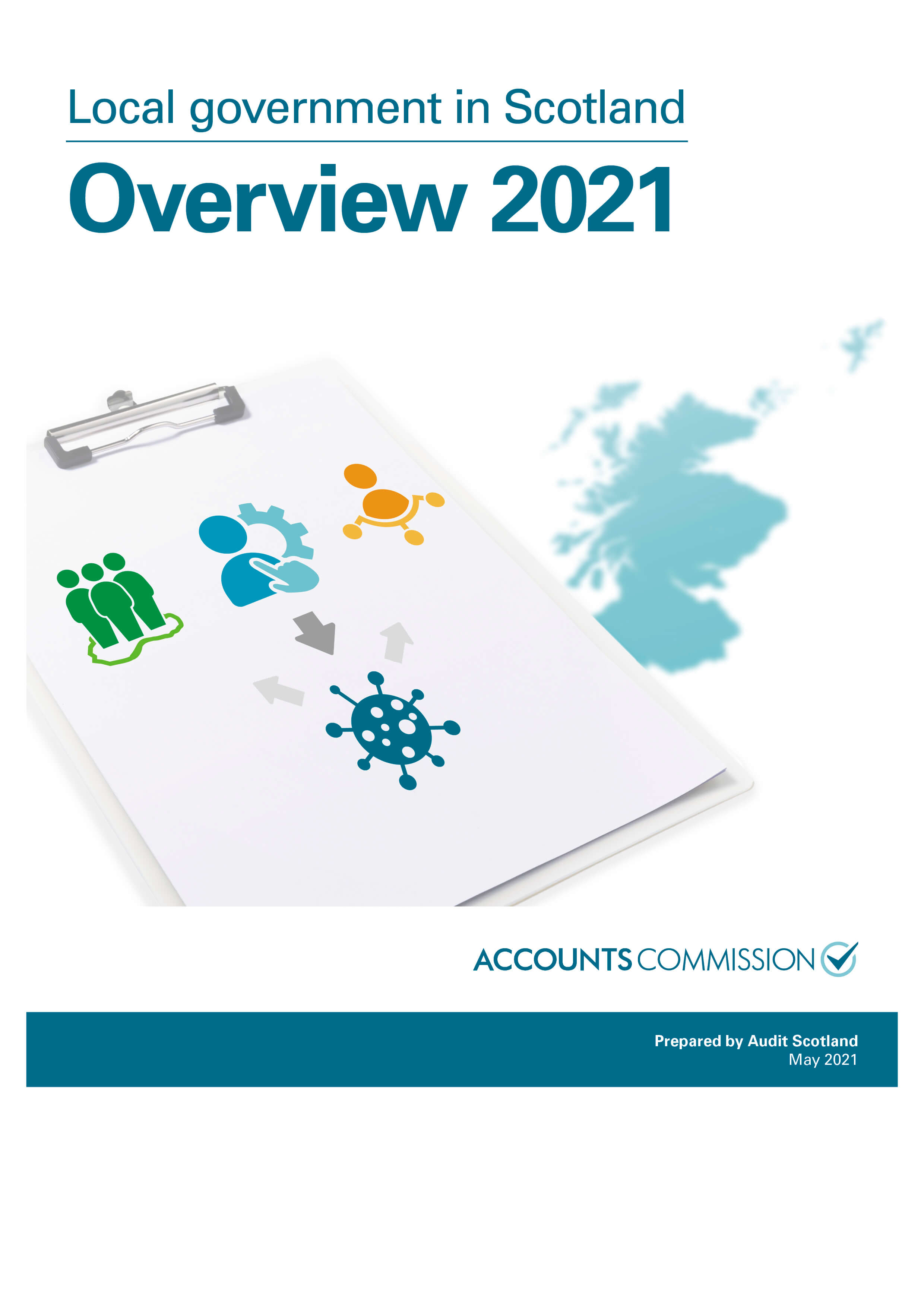 Local Government in Scotland Overview 2021
Local Government in Scotland Overview 2021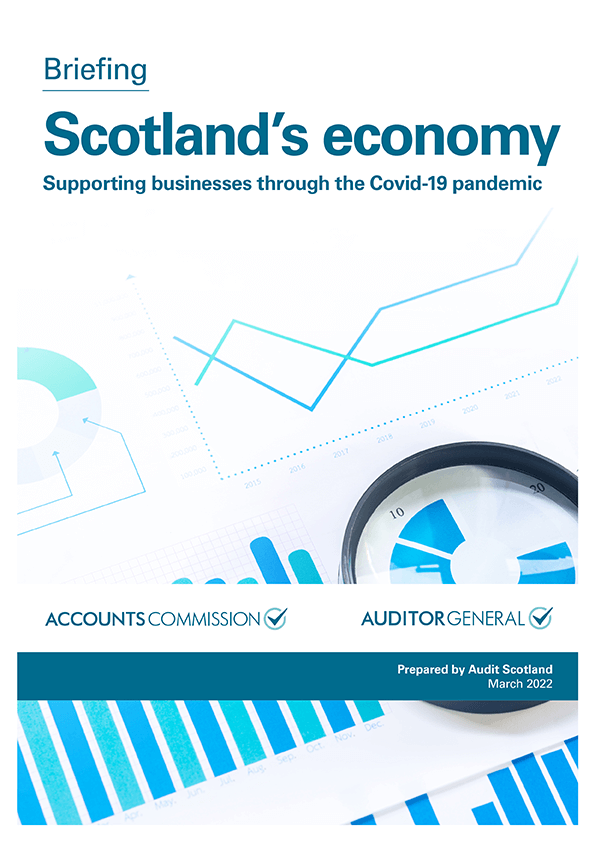 Scotland's economy: Supporting businesses through the Covid-19 pandemic
Scotland's economy: Supporting businesses through the Covid-19 pandemic Local government in Scotland: Financial overview 2020/21
Local government in Scotland: Financial overview 2020/21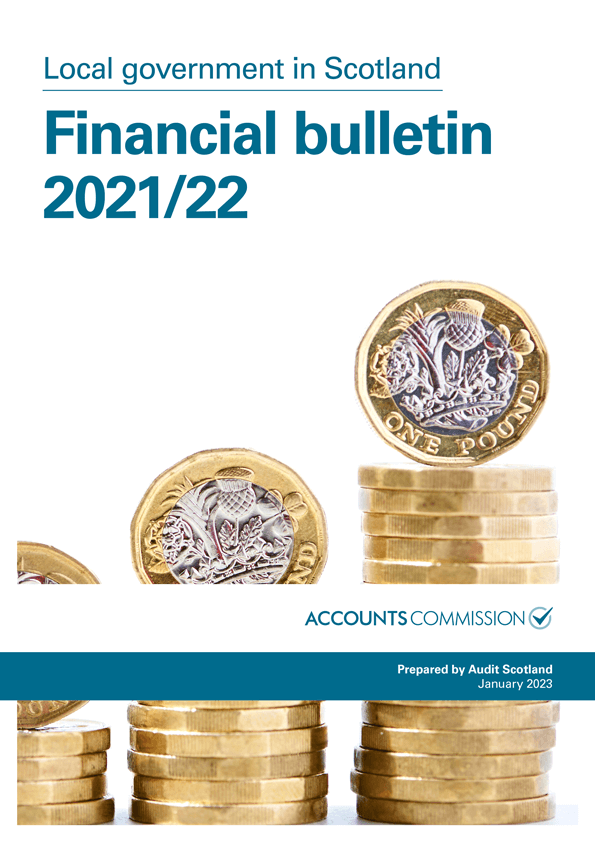 Financial bulletin 2021/22
Financial bulletin 2021/22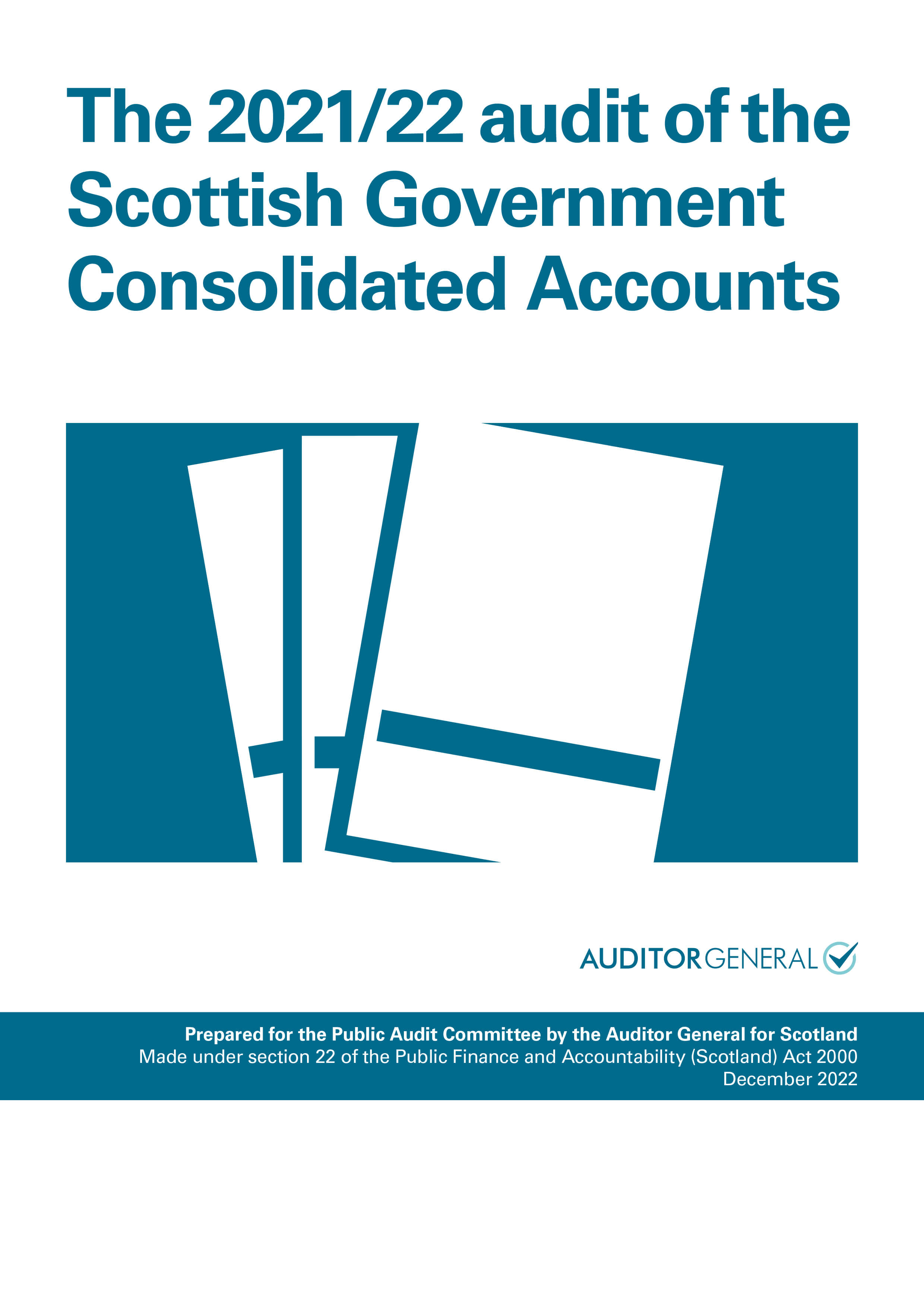 The 2021/22 audit of the Scottish Government Consolidated Accounts
The 2021/22 audit of the Scottish Government Consolidated Accounts The 2020/21 audit of the Scottish Government Consolidated Accounts
The 2020/21 audit of the Scottish Government Consolidated Accounts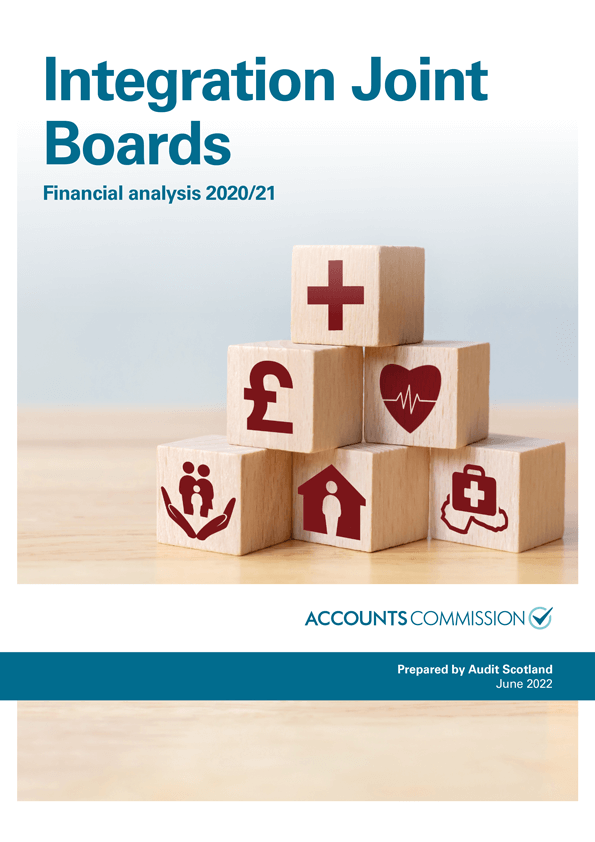 Integration Joint Boards: Financial analysis 2020/21
Integration Joint Boards: Financial analysis 2020/21 The digital divide - inequality in a digital world
The digital divide - inequality in a digital world Improving outcomes for young people through school education
Improving outcomes for young people through school education The impact of Covid-19 on Scottish councils' benefit services
The impact of Covid-19 on Scottish councils' benefit services Scotland's public finances: Challenges and risks
Scotland's public finances: Challenges and risks





